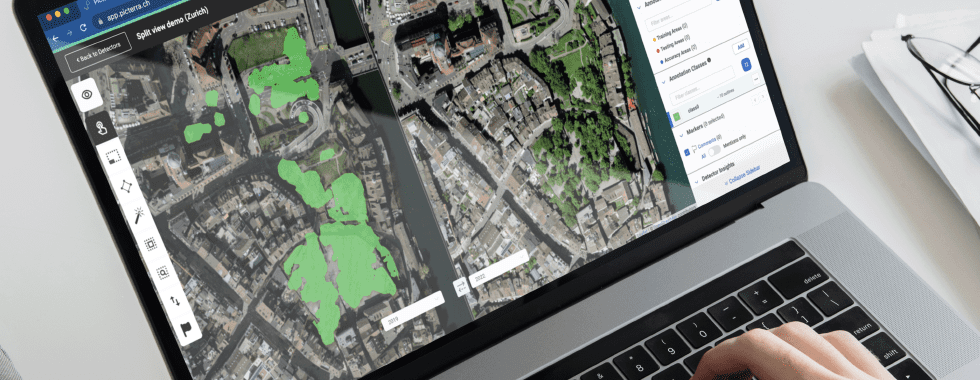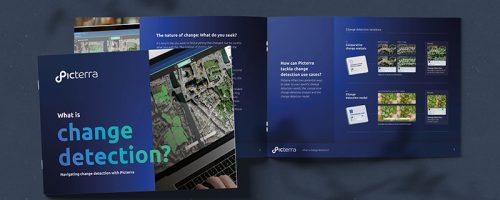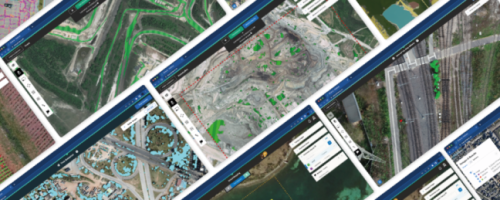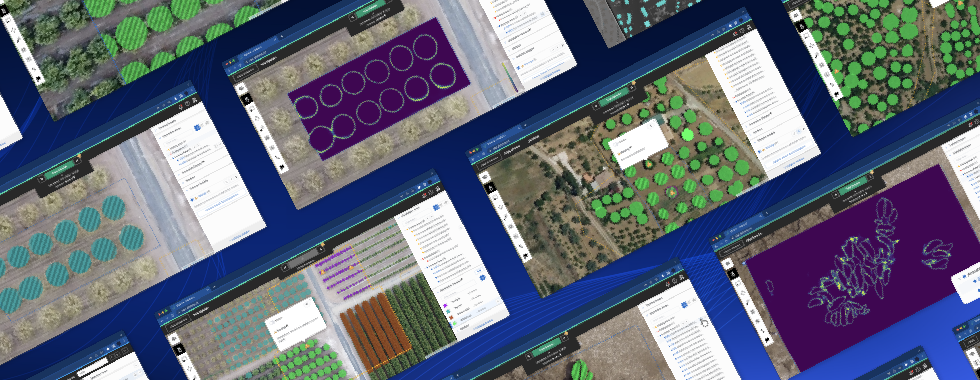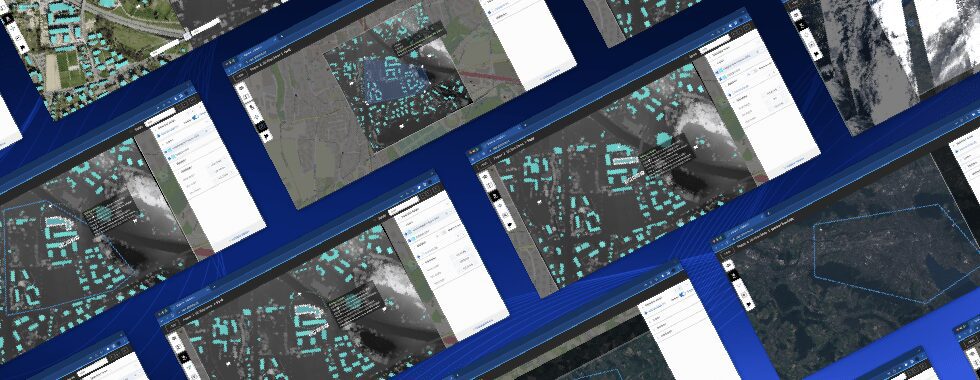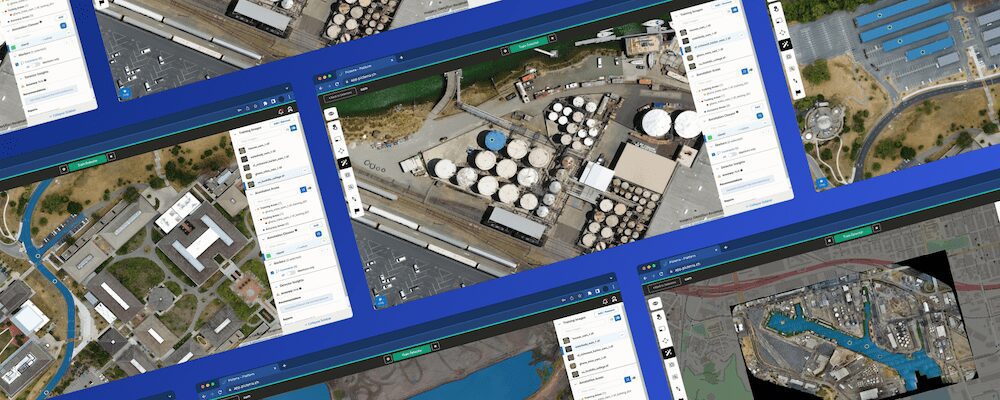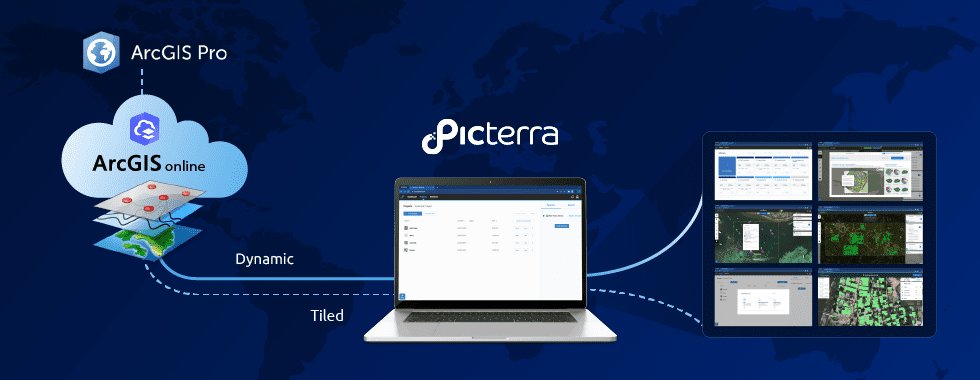Lausanne, Switzerland, September 11, 2023 – Picterra, the leading provider of geospatial AI enterprise software, today announced powerful new change detection technology that allows users to quickly and accurately identify changes, trends, and anomalies in drone, satellite, and other aerial imagery.
Geospatial imagery provides a bird’s-eye view of the Earth’s surface, offering invaluable insights that are often impossible to obtain through ground-level observation alone. With advancements in drone and satellite technology, we now have access to high-resolution images that can capture minute details—from the movement of vehicles to the growth of vegetation. However, having a snapshot is just the first step. The real value lies in comparing these snapshots over time to identify changes, trends, and anomalies. That’s where change detection algorithms and technologies become indispensable.
What is change detection?
Change detection may seem like a simple concept—identifying “something that has changed.” However, from a technical standpoint, it’s a multifaceted subject that opens up a realm of possibilities. The context and the intended application of change detection are crucial. For instance, two images of the same location taken on different days may look identical to the naked eye, but at the pixel level, they could be entirely different. The key is to define the scope of change detection precisely to find a viable solution.
Along with today’s launch of our revolutionary change detection technology, we have produced a free guide that dives deeper into the nature of change and other key concepts including change scenarios, use cases, and how we have incorporated these innovations into the platform. Click below to download now.
Want to learn more?
What are some use cases of change detection?
- Something is disappearing: for example, trees being cut down, buildings being demolished, or water bodies shrinking.
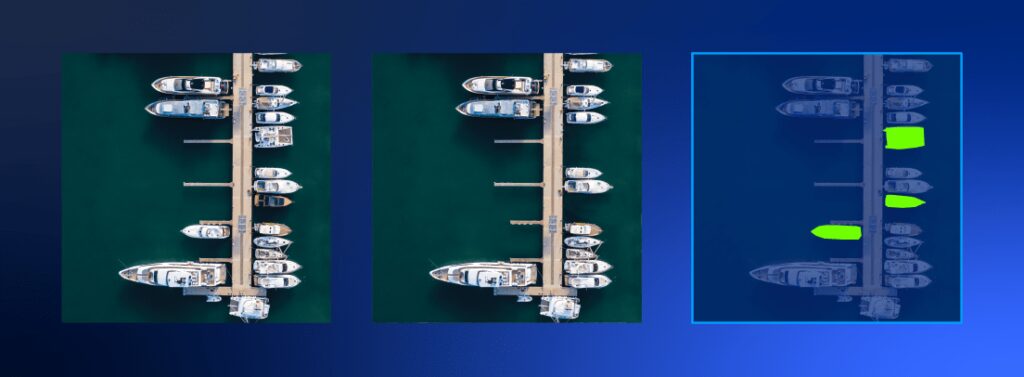
- Something is appearing: for example, trees being planted, buildings being constructed, or oil spills occurring.
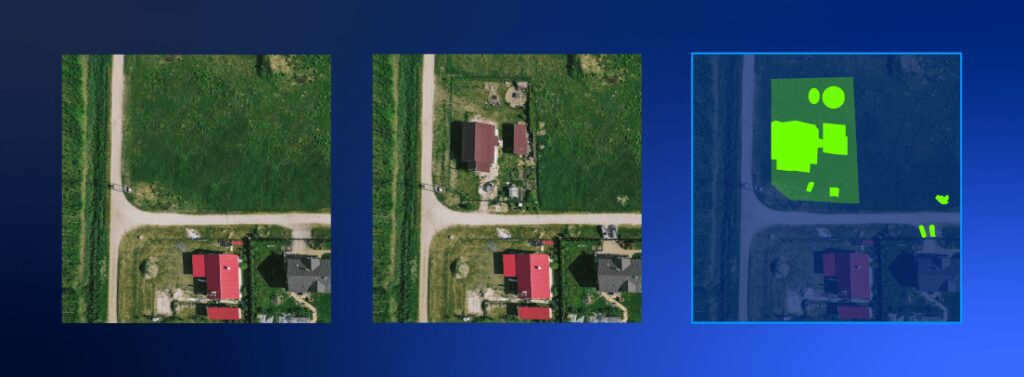
- Something is shifting/moving: for example, infrastructure elements moving.
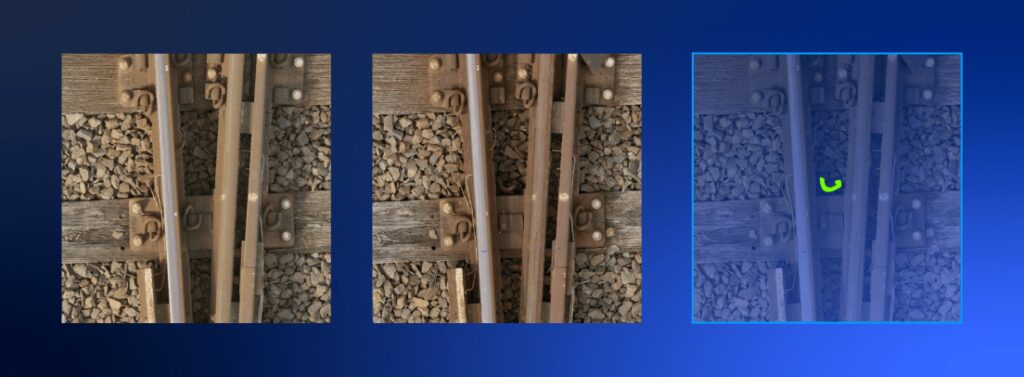
- Something is changing appearance: for example, changes in the NDVI signal of a crop indicating shifts in its vitality and vigor.
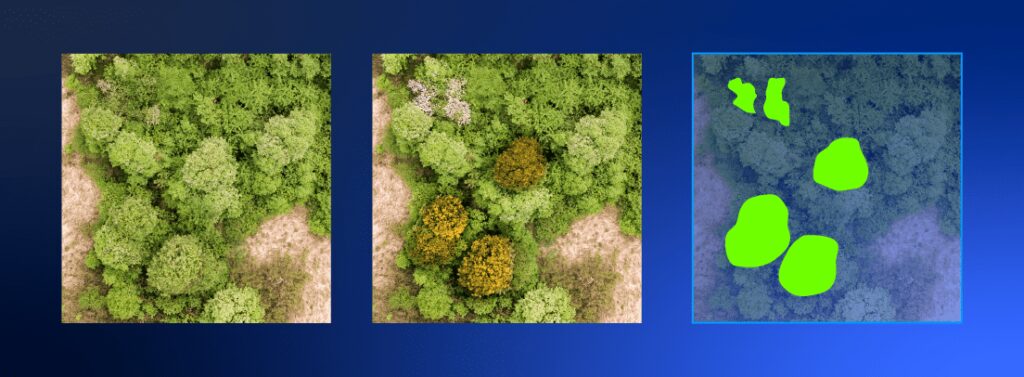
How is change detection implemented in Picterra?
At Picterra, we offer two streamlined approaches to meet your specific change detection needs: Comparative Change Detection Analysis and the Change Detection Model.
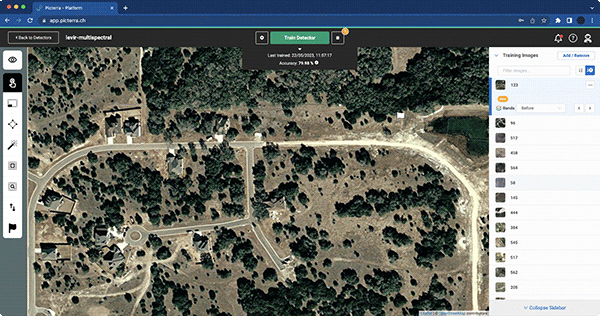
Comparative Change Detection Analysis
This method involves comparing objects or textures in two images taken at different times. It identifies changes based on the presence or absence of these features between the “before” and “after” images. This approach is particularly effective when you need high accuracy and reliable image detection, but it doesn’t account for changes in appearance. It’s a geometry-based comparison, meaning it doesn’t rely on machine learning.
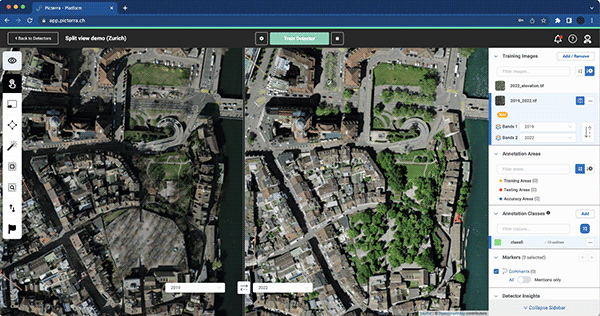
Change Detection Model
This approach allows you to annotate changes directly by viewing both “before” and “after” images simultaneously. You can focus on specific types of changes, like a building’s construction phase, and train a machine learning model based on these annotations. This method is more flexible and can also be more efficient, as it runs a single model on a pair of images.
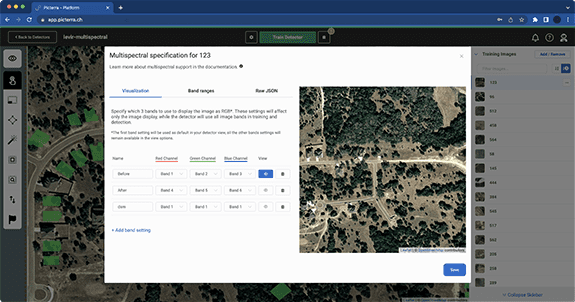
Dedicated tools
To make your workflow smoother, we offer specialized tools like “Format images for change detection,” which merges two images into one for both training and detection and “Split view,” an annotation tool that displays both images side-by-side for easier annotation.
Both methods have their own advantages and limitations, and the best fit depends on your specific use case and data availability. Our customer success team is always on hand to guide you in making the right choice.
Get started
Interested in unlocking the full potential of change detection? Picterra offers proven methods like Comparative Change Detection Analysis and the Change Detection Model to cater to your immediate needs. But that’s not all—our R&D team is actively developing next-generation approaches, including Coarse Grid-Based Detection, Anomaly Detection, and time-series analysis, to provide even more tailored solutions in the future.
Whether you’re focused on environmental conservation, urban planning, or any other specialized area, get in contact with us to discover how Picterra can meet your current needs and learn about the exciting developments we have on the horizon. Your input is invaluable as we continue to innovate in this ever-changing field.
